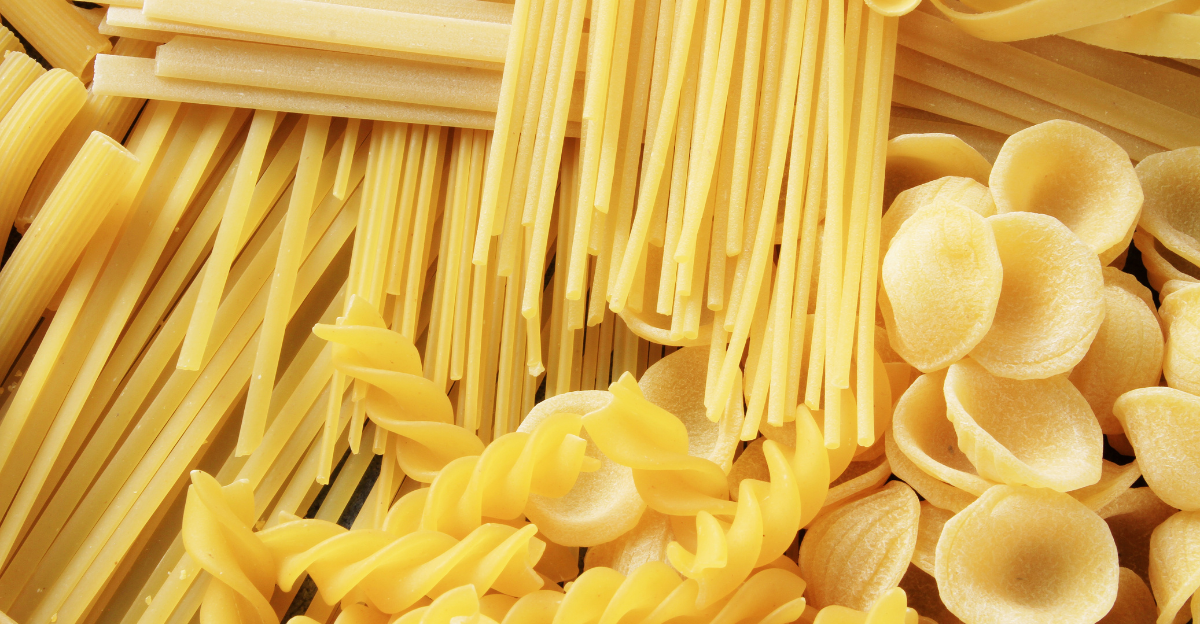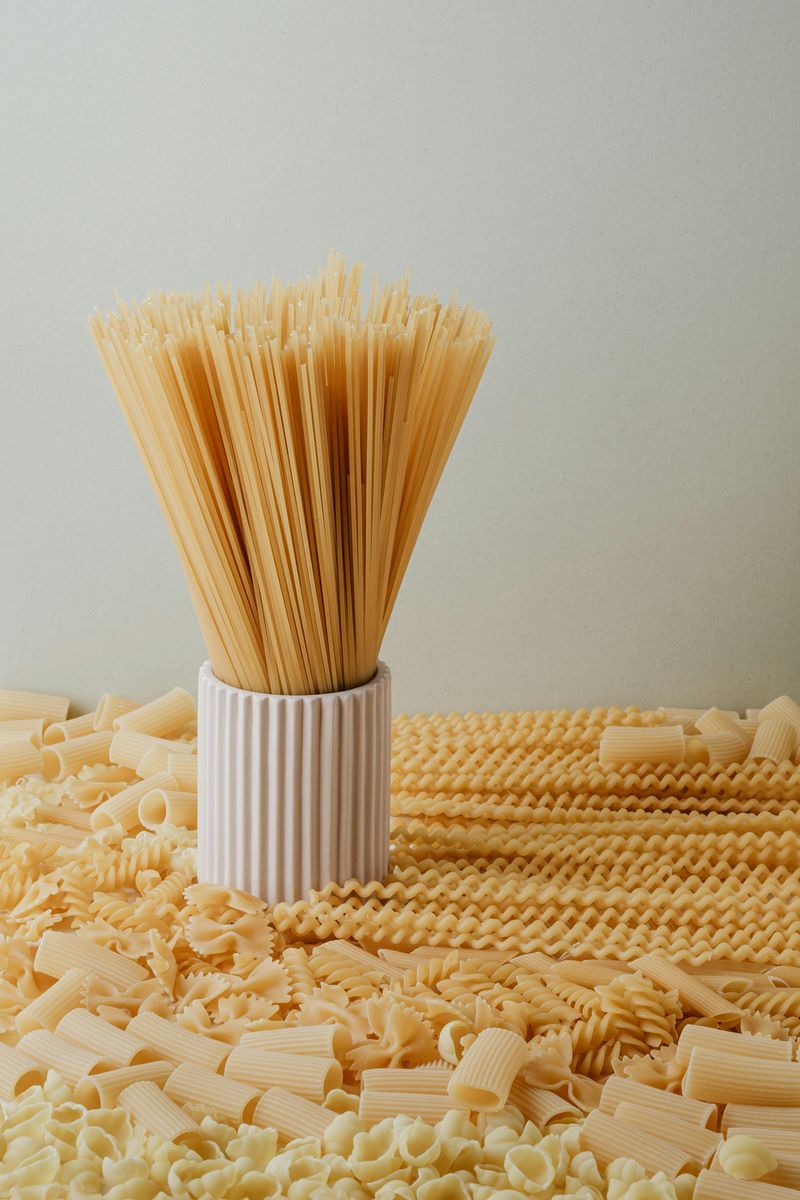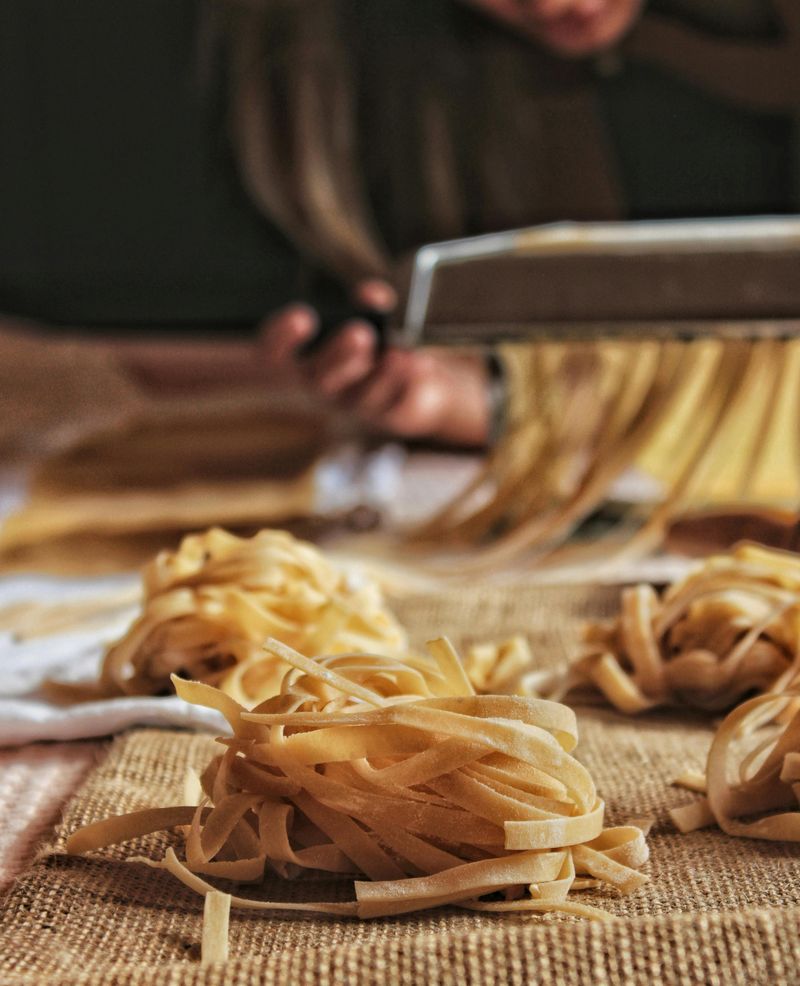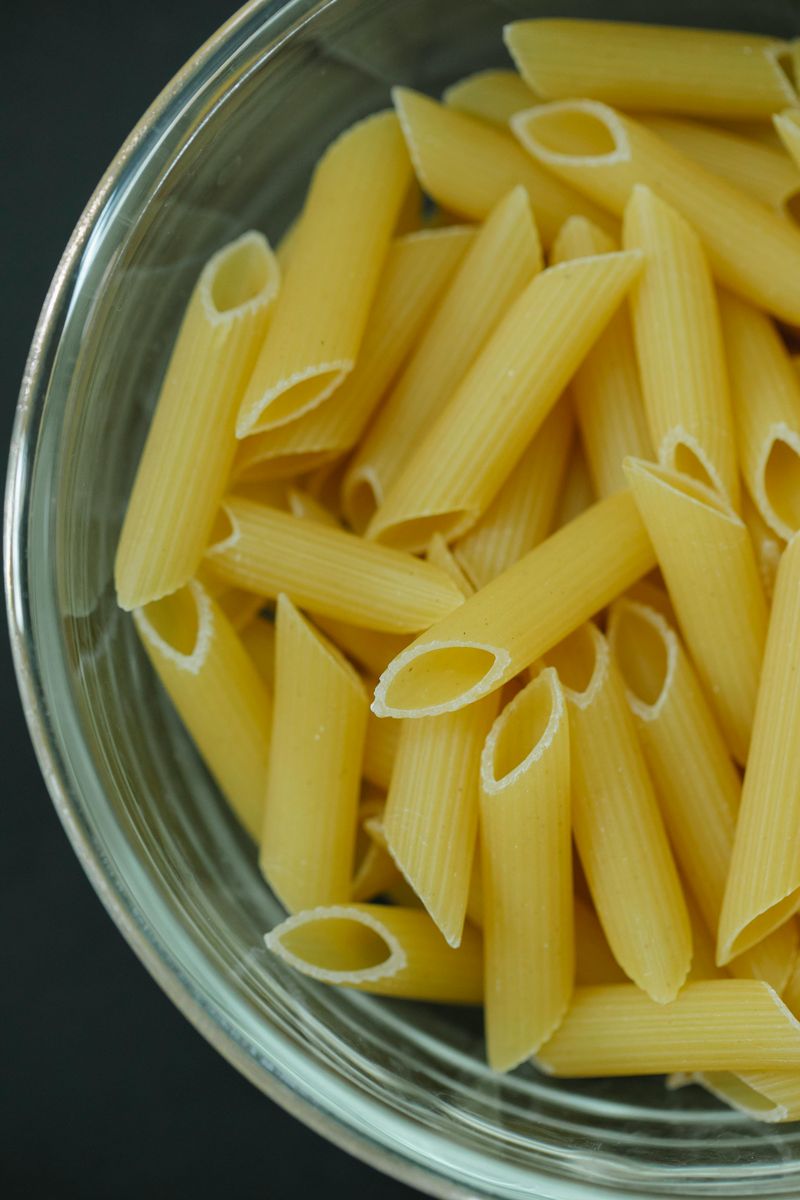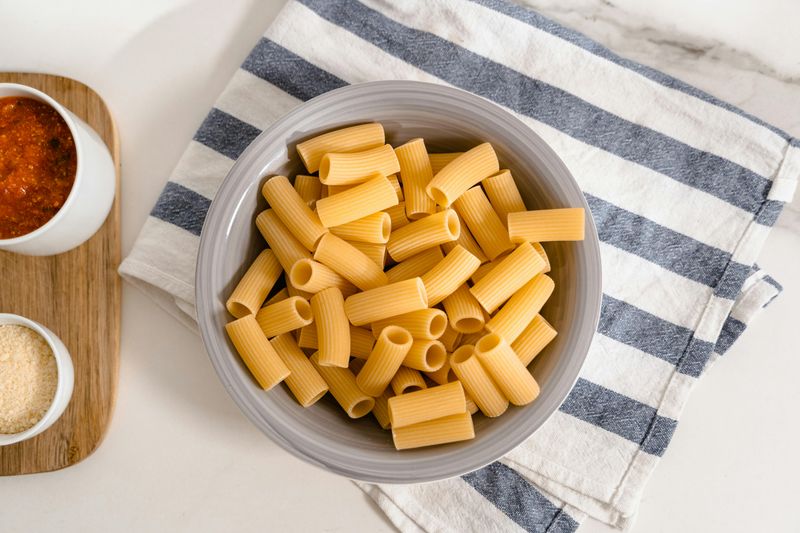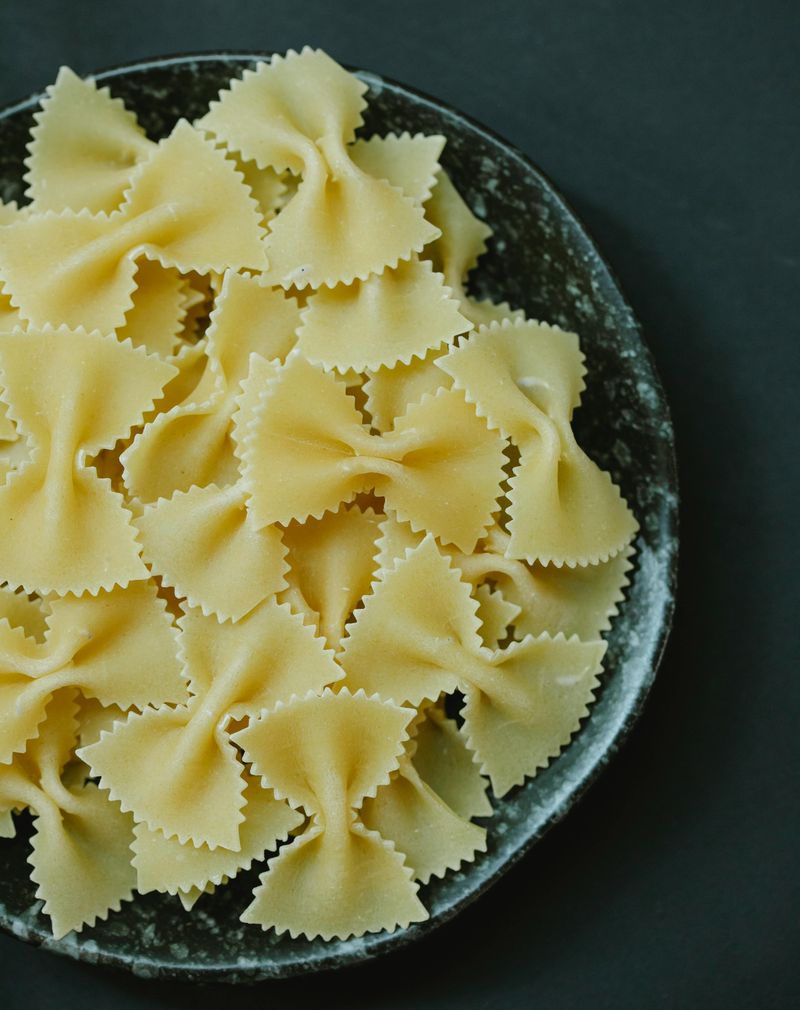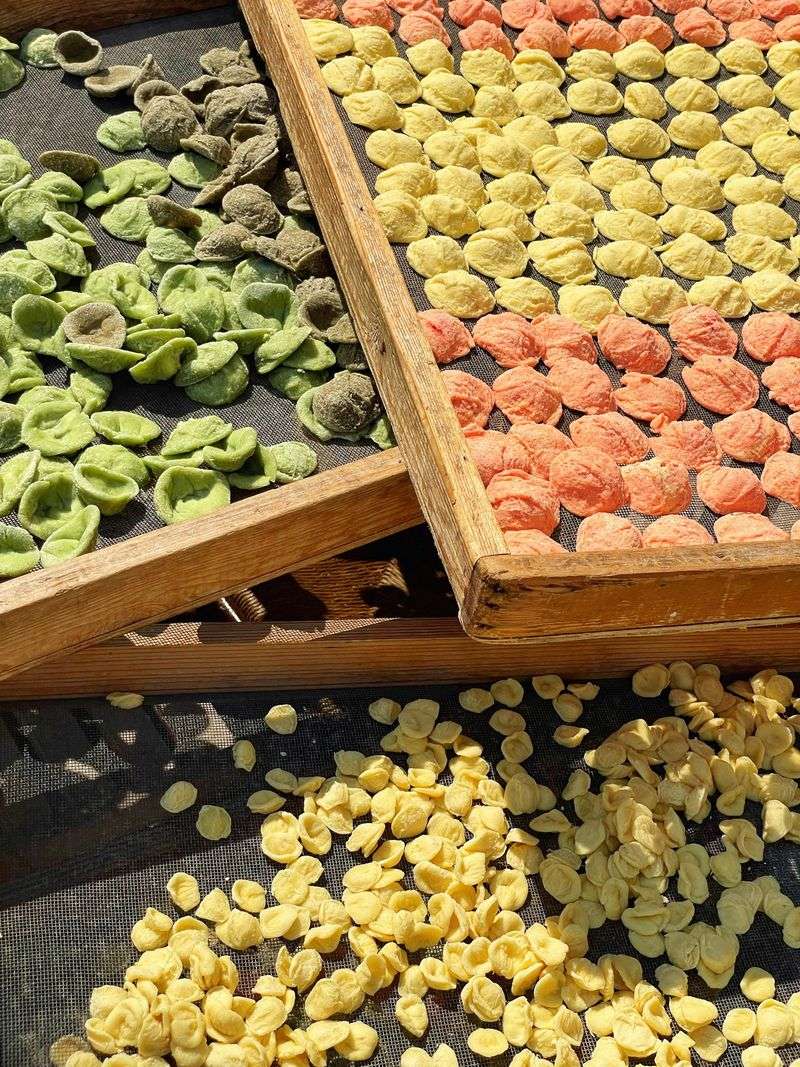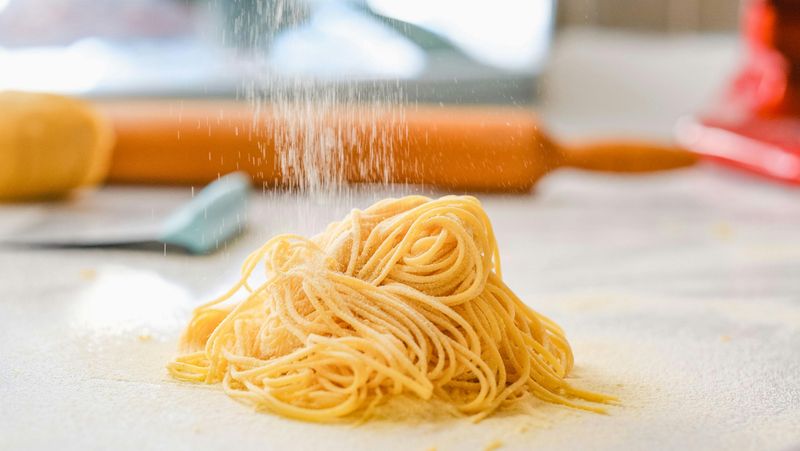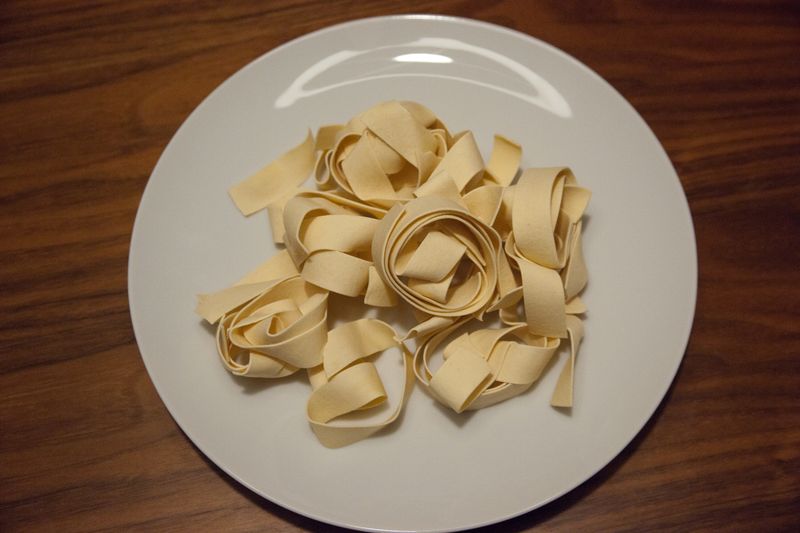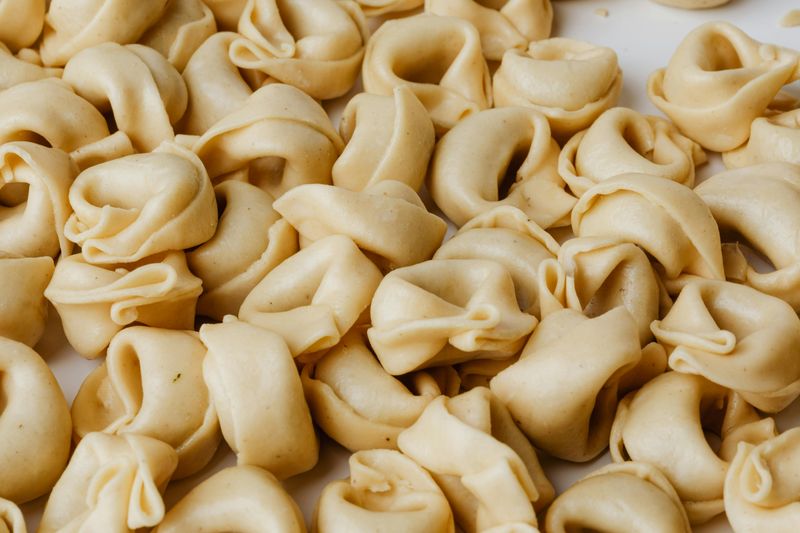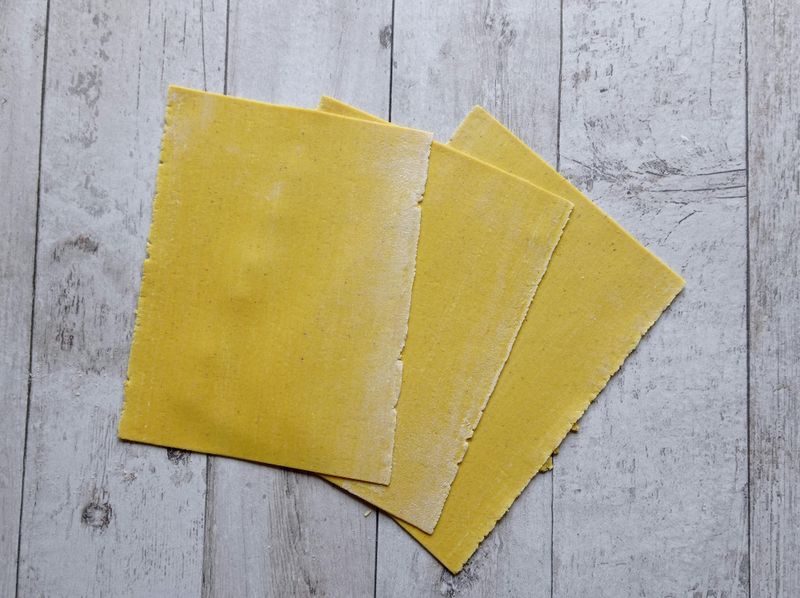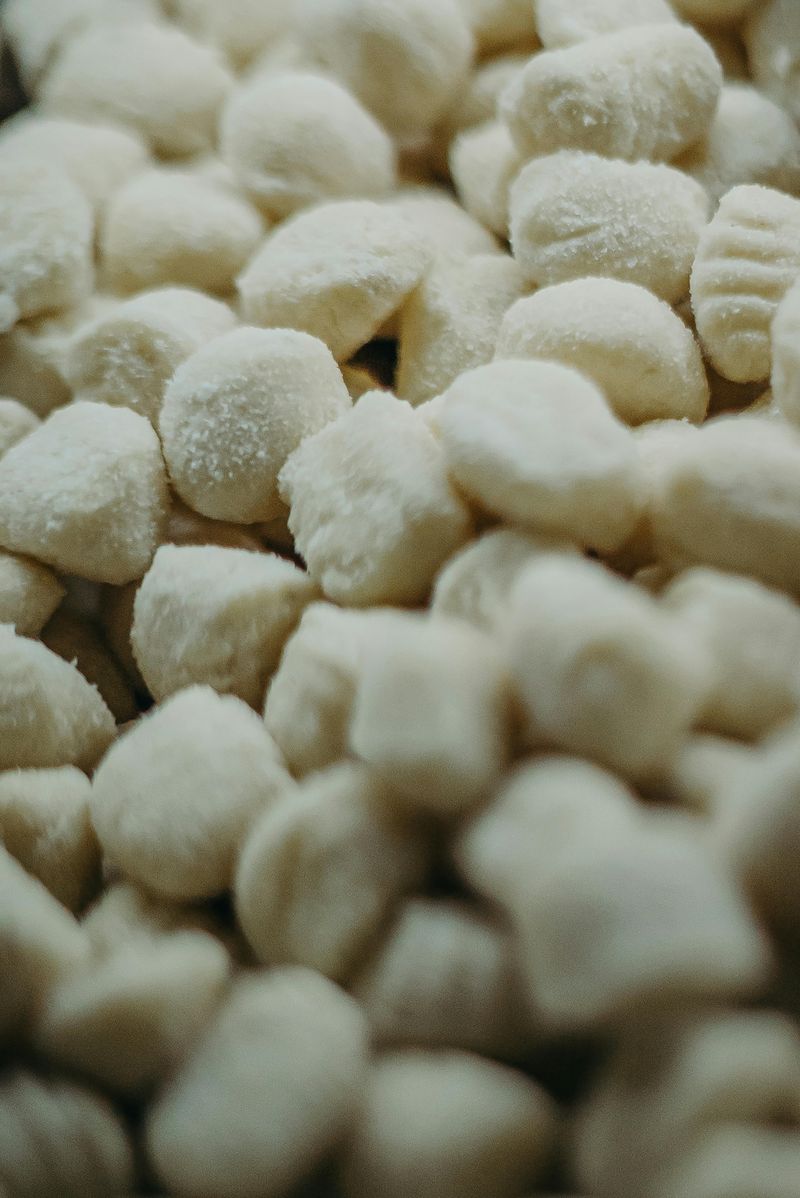Pasta comes in hundreds of shapes, each designed with a specific purpose in mind. The right sauce can transform a simple pasta dish into something extraordinary. Pairing the perfect sauce with the right pasta shape isn’t just about tradition—it’s about maximizing flavor and texture in every bite.
1. Spaghetti: The Classic String That Loves Tomato Sauces
Long, thin, and beloved worldwide, spaghetti captures tomato-based sauces beautifully. The smooth strands become coated in marinara or pomodoro sauce, allowing the bright, acidic flavors to shine without overwhelming the pasta.
Authentic Italian spaghetti is slightly thicker than many American versions, giving it the perfect body to stand up to chunky tomato sauces while remaining delicate enough for lighter variations. Try it with basil-infused marinara for a simple weeknight dinner.
Fun fact: Contrary to popular belief, spaghetti with meatballs isn’t traditionally Italian—it’s an Italian-American creation!
2. Fettuccine: Ribbon-Like Pasta Made for Creamy Indulgence
Broad and flat, fettuccine’s ribbon-like structure provides the ideal surface for thick, creamy sauces to cling to. The name itself means ‘little ribbons’ in Italian, perfectly describing its elegant appearance.
Alfredo sauce—a rich blend of butter, cream, and Parmesan—was practically invented for fettuccine. Each strand carries the velvety sauce from plate to palate without drowning in it. The pasta’s substantial texture stands up beautifully against the weight of cream-based sauces.
When cooking fettuccine, aim for the perfect al dente texture—slightly firm when bitten, never mushy—to complement your luxurious sauce.
3. Penne: Tubular Treasures That Trap Chunky Sauces
Penne’s tube shape with angled ends acts like little flavor pockets, capturing chunks of vegetables, meat, and sauce inside and out. The ridged exterior (penne rigate) grabs onto hearty sauces, while the hollow center fills with savory goodness.
Arrabbiata sauce—a spicy tomato sauce with garlic and red chili peppers—finds its perfect match in penne. The heat gets distributed evenly throughout the dish. Bolognese works wonderfully too, with meat sauce clinging to every ridge.
The name ‘penne’ comes from the Italian word for ‘quill’ or ‘feather,’ reflecting its diagonal cut that resembles an old-fashioned pen nib.
4. Rigatoni: Wide-Ridged Tubes That Embrace Hearty Sauces
Larger than penne with straight-cut ends, rigatoni’s substantial size and deeply ridged exterior make it the heavyweight champion for thick, meaty sauces. Each tube becomes a miniature flavor vessel, holding generous amounts of sauce both inside and out.
Slow-cooked ragùs with tender chunks of meat find their soulmate in rigatoni. The pasta’s structure prevents the sauce from sliding off, ensuring every bite delivers maximum flavor. Baked rigatoni dishes showcase its sturdy nature, maintaining shape and texture even after time in the oven.
Originally from central and southern Italy, rigatoni’s name comes from ‘rigato,’ meaning ‘ridged’ or ‘lined.’
5. Farfalle: Butterfly Pasta That Flutters With Light Sauces
Resembling tiny butterflies or bowties, farfalle brings playfulness to your pasta bowl. The pinched centers remain slightly firmer when cooked, creating an interesting texture contrast with the softer wings.
Light cream or tomato-cream sauces complement farfalle’s whimsical shape perfectly. The sauce pools slightly in the center pinch while coating the ruffled edges. Try it with a pink vodka sauce for an elegant dinner that both kids and adults will love.
‘Farfalle’ literally means ‘butterflies’ in Italian. This pasta dates back to the 16th century in Northern Italy, where it was originally made as a decorative celebration pasta!
6. Orecchiette: Little Ears That Cup Chunky Vegetables
These ‘little ears’ from Puglia have a unique dome shape with a slightly thinner center and thicker rim. The concave form creates perfect little cups that catch small pieces of vegetables and meats.
Traditional pairings include broccoli rabe and sausage, where the slight bitterness of the greens balances beautifully with savory meat. Each piece of orecchiette holds a tiny pool of olive oil and bits of garlic, creating flavor bombs with every bite.
Hand-making orecchiette is still common in southern Italy, where women often sit outside their homes forming the shapes with quick, practiced motions using just their thumbs and a knife.
7. Linguine: Elegant Flat Strands That Dance With Seafood
Narrower than fettuccine but wider than spaghetti, linguine’s flat shape provides the ideal surface for light, oil-based seafood sauces. The name means ‘little tongues’ in Italian, aptly describing its long, flat appearance.
Clam sauce (alle vongole) is linguine’s classic partner, with the pasta strands intertwining with the shellfish and soaking up the briny, garlicky sauce. White wine-based sauces with shrimp or scallops also pair beautifully, creating a delicate balance between pasta and seafood.
Originating in the coastal regions of Italy, linguine with seafood represents the perfect marriage of land and sea—the wheat of the fields and the bounty of the Mediterranean.
8. Pappardelle: Wide Ribbons Made for Rich Meat Sauces
Dramatically wide and flat, pappardelle commands attention with ribbons measuring about an inch across. The substantial surface area provides the perfect canvas for clinging, robust sauces.
Slow-cooked meat ragùs—particularly wild boar, duck, or beef—were made for pappardelle. The tender strands of meat intertwine with the broad pasta, creating the perfect bite. The pasta’s name derives from the verb ‘pappare,’ which means ‘to gobble up’—an apt description for how quickly you’ll devour this combination!
Traditional in Tuscany, pappardelle with wild boar ragù remains a cornerstone dish that showcases the region’s hunting traditions and robust cuisine.
9. Tortellini: Stuffed Rings That Swim Happily in Light Sauces
These little ring-shaped pasta parcels hide delicious fillings within their folded exteriors. According to legend, tortellini was inspired by Venus’s navel—a romantic notion for this belly-button shaped pasta from Emilia-Romagna.
Traditionally filled with meat, cheese, or vegetables, tortellini pairs beautifully with light broths or delicate cream sauces that complement rather than overwhelm the filling. In Bologna, tortellini in brodo (clear broth) represents the classic preparation, allowing the pasta’s filling to shine.
Making tortellini by hand remains a treasured skill passed through generations, with each region having slight variations in folding techniques and fillings.
10. Lasagna Sheets: Flat Layers That Build Flavor Fortresses
Broad, flat sheets form the building blocks of one of Italy’s most beloved baked dishes. Lasagna noodles create distinct layers that separate and support the various components of this magnificent creation.
Traditional lasagna alternates pasta sheets with savory ragù, creamy béchamel sauce, and cheese—typically Parmigiano-Reggiano in northern Italy or ricotta and mozzarella in American-Italian versions. The flat surfaces provide the perfect platform for these complementary flavors to mingle while maintaining their distinct layers.
Ancient Romans ate an early version of lasagna, though their dish, called ‘lasanum,’ referred to the cooking pot rather than the food itself!
11. Gnocchi: Potato Dumplings That Love Delicate Herb Sauces
Not technically pasta but included in the pasta family, gnocchi are small, soft dumplings traditionally made from potato, flour, and egg. Their light, pillowy texture demands sauces that won’t overwhelm their delicate nature.
Butter and sage sauce creates magic with gnocchi—the nutty brown butter clings to each dumpling while crispy sage adds aromatic punch. Gorgonzola cream sauce offers another perfect pairing, with the creamy, tangy cheese complementing the potato’s subtle sweetness.
The word ‘gnocchi’ may come from ‘nocchio,’ meaning a knot in wood, or ‘nocca,’ meaning knuckle—both references to its small, knobby shape.
